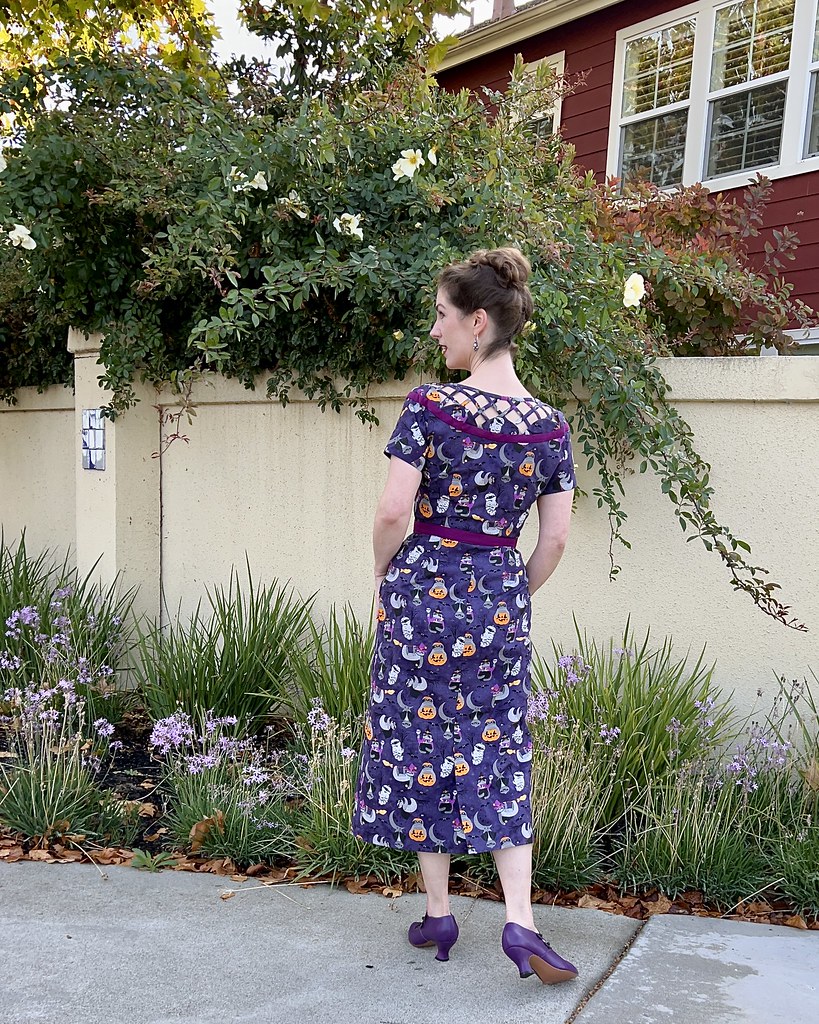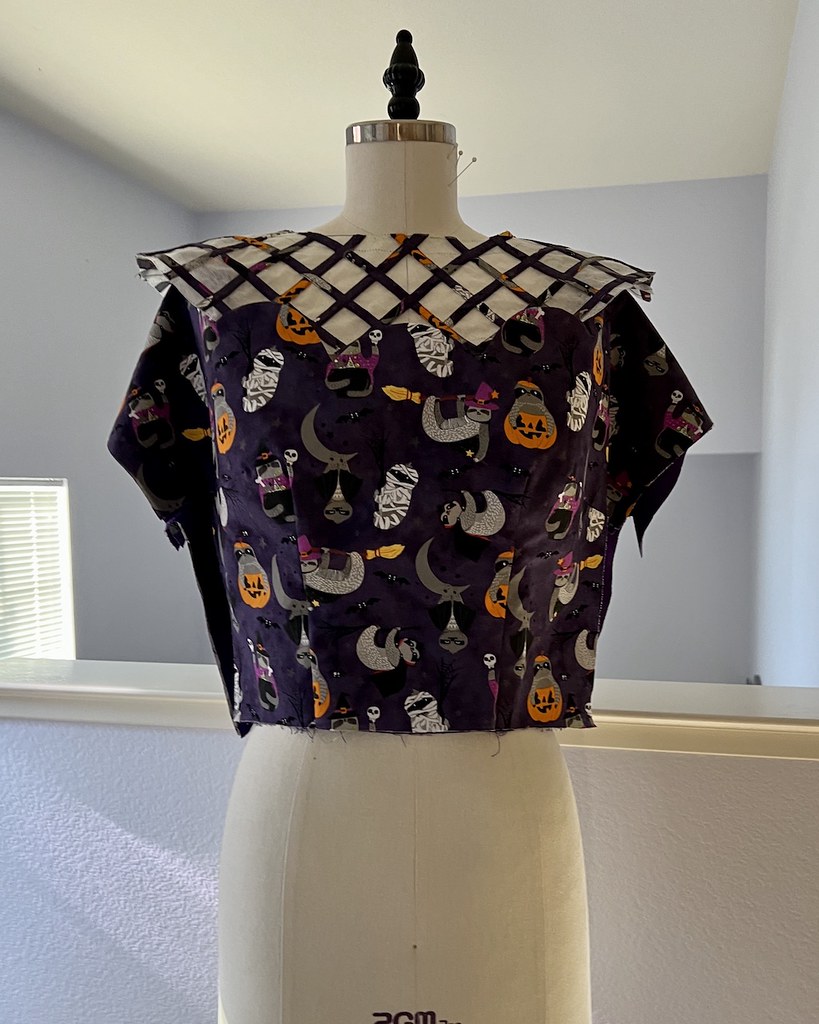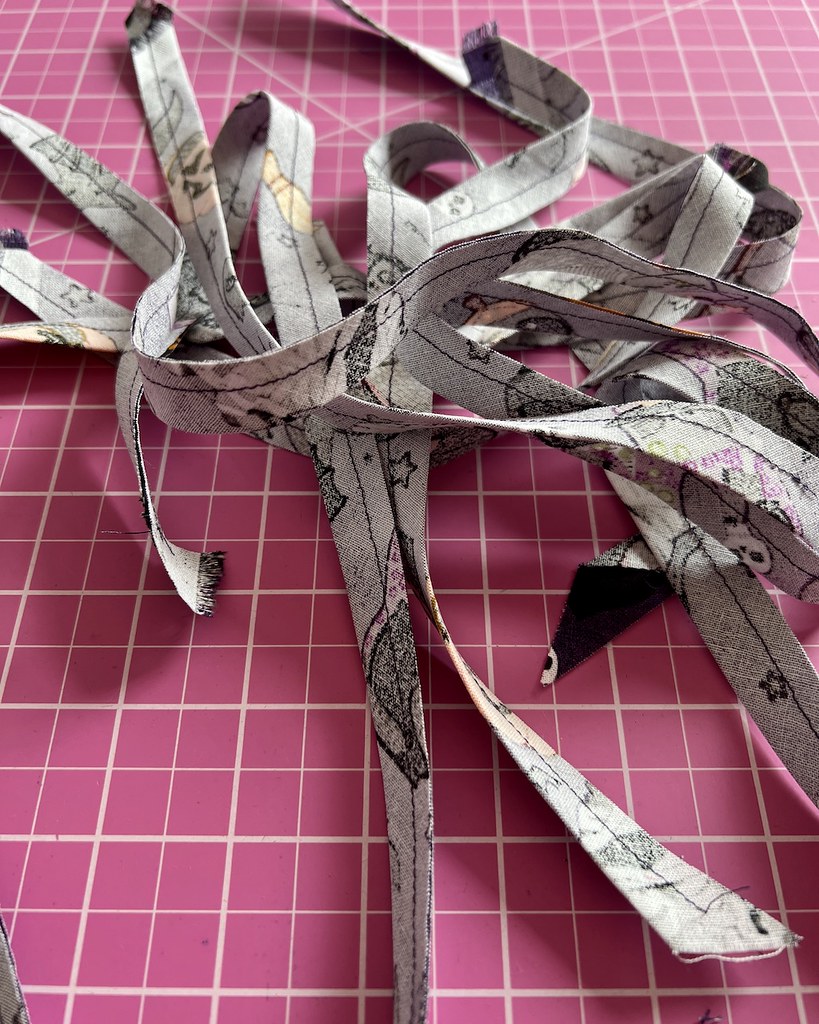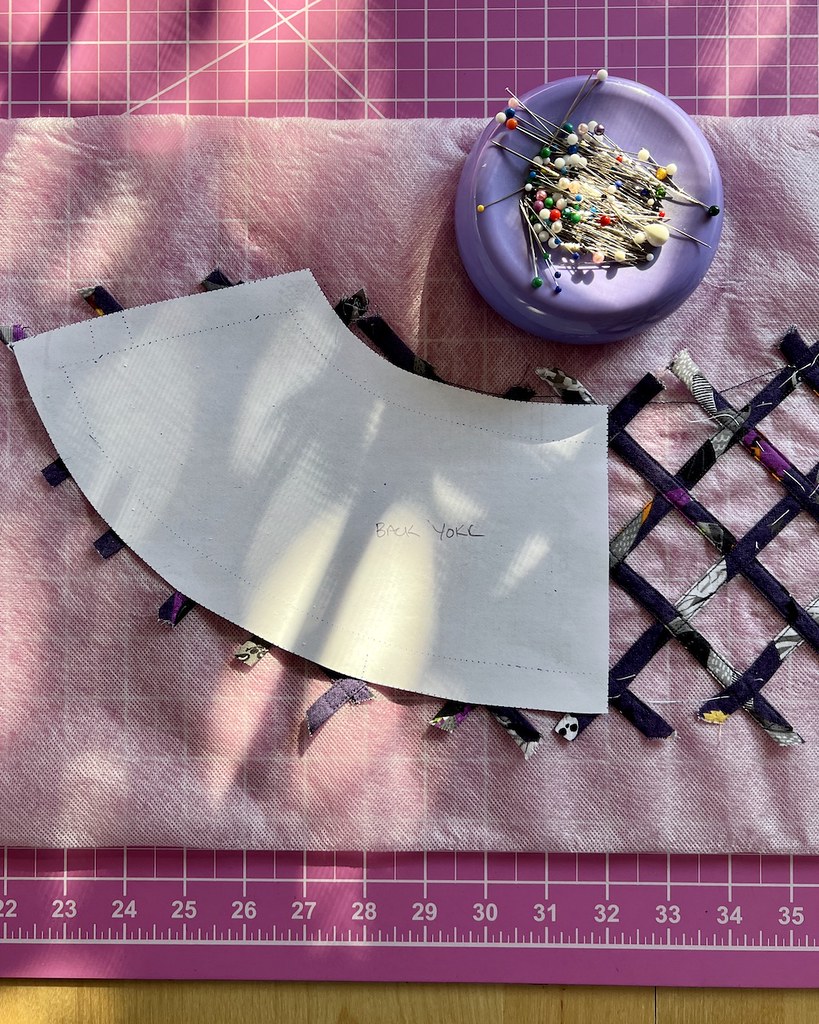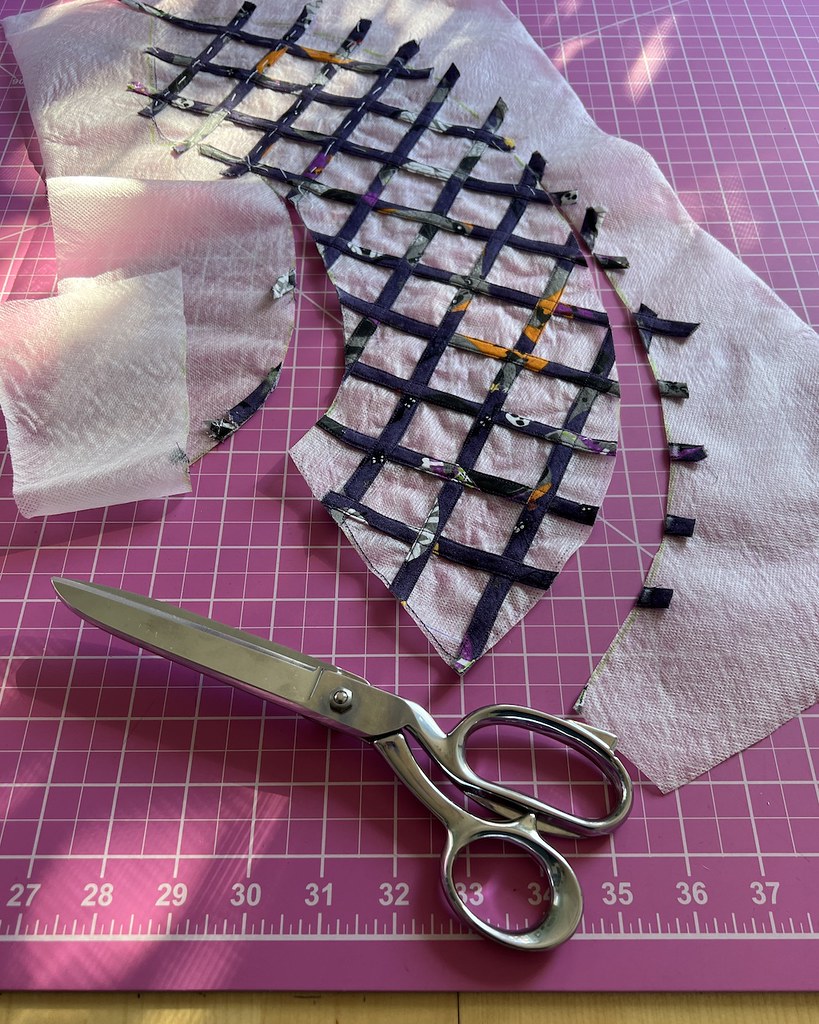Well, I missed the deadline on this post. Whoops! I did manage to finish my dress in time for Halloween, but getting through the photos proved to be too much for me. This time change business kills me; I lose all of my motivation around this time of year. Blergh.
But I am happy to report that I love how this year's Halloween outfit turned out. Michelle from OldPatterns.com sent me the dress pattern, and I just couldn't wait to try it out. The holiday themed print was an excellent way to test out the pattern as a wearable muslin.
If you have been around these parts for any length of time, you are probably well aware of my obsession with novelty prints.
There are a whole lot of orange and grey based Halloween prints, but neither of those colors work especially well for me. But add purple into the mix, and I am on board!
Mr. Blue came along for the photo shoot. He looks great in any color! Valentino prefers to stay at home these days, snuggled in one of his many doggie beds (especially early in the morning when the temperature is a bit chilly).
The shoes were another motivating factor when picking a print for this year's themed outfit.
Of course, the sloths made my choice easy. I actually had another sloth novelty print planned for my Summer sewing, but never got around to that project, so that will have to wait until next year.
As I mentioned, this dress was more of a wearable muslin and a test of the cage neckline technique that I made up. And I am pleased to report that it worked!
There is an excellent chance that I will be making this pattern again, perhaps with a full skirt, or perhaps the straight skirt paired with more of the originally intended sheer yoke.
But that is for another day, and requires a bit of research for fabric choices and such.
I really haven't been sewing at all for a few weeks. Most of my free time is spent with a chihuahua on my lap, and a pair of knitting needles and some squishy wool. Tino has become an absolute lap dog in his later years, and I am trying to give him as much attention as I can manage. So for now, it's couch appropriate crafting. But I do have quite a few sewing projects that I would like to put together during the colder months, so I am hoping to get back into the sewing room soon.







